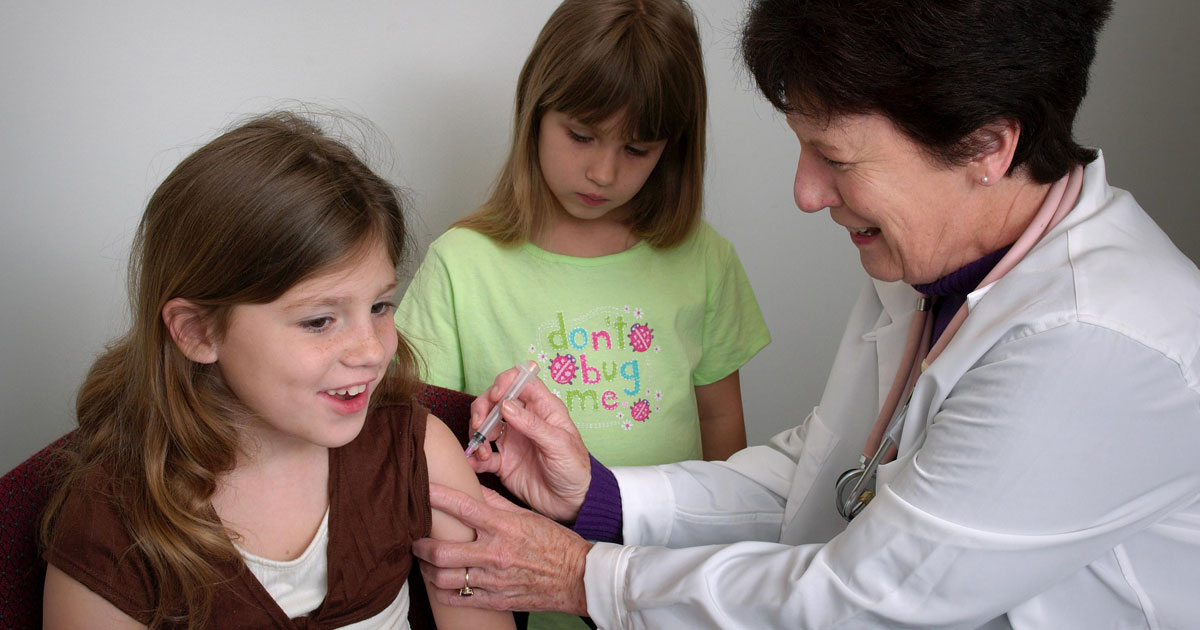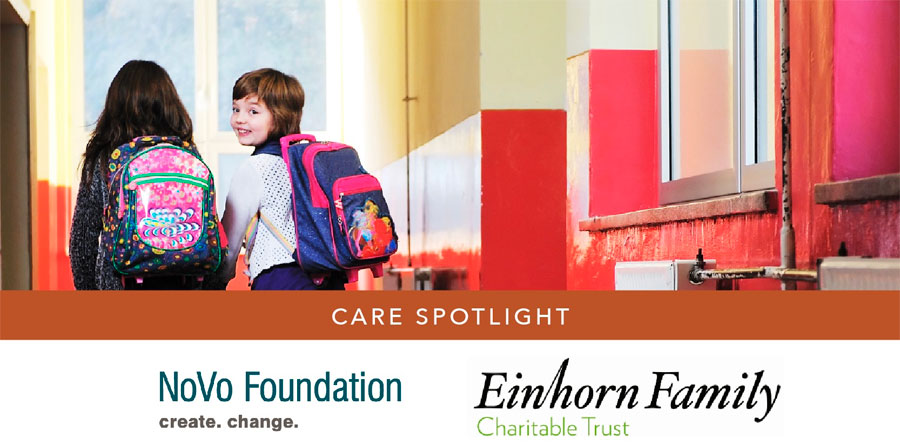

The domain of Care includes access to healthy foods and parks, clean air, pre-natal health services, school support staff, and mental and emotional health care. On average, the 10 cities are delivering approximately 46% of these supports. Buffalo demonstrates the highest level of Care (58%) as measured through this Index, with higher scores in clean air relative to other cities and adequate resources for in-school support staff, including guidance counselors, instructional aides and support services staff who connect students with resources to meet their individual needs.
Access to Health Insurance
Health plays a critical role in academic and life outcomes for children, and health insurance is critical to ensuring families can afford quality care and proactively manage health. In all 10 cities, over 90% of children under the age of 18 have health insurance and Springfield, Buffalo, and Philadelphia stand out among the group for having nearly 95% of children insured across racial groups. In some cities, including Charlotte, Minneapolis, and Baltimore, we see high levels of disparity between access for Latino and Asian children compared to White and Black children. This could be illustrative of the inter-connection between immigration policy and health and education outcomes. While there are federal and state programs set up to ensure low-income families can access affordable health insurance, immigration status and English language proficiency may affect families’ ability and willingness to seek coverage and services. Dental coverage is also a critical to overall health, though less data is available on levels of access or utilization of dental services across communities. Data shows an overall increase in dental visits among low-income children, which can be attributed to the Affordable Care Act’s requirement for public insurance to cover dental for children. Without health insurance and adequate preventative check-ups and treatments, children and families are less likely to be able to participate regularly in school and jobs.
Pre-natal Services
Neonatal health has been linked with educational performance in elementary and middle school, even when controlling for other family socioeconomic factors. Cities overall seem to have high levels of pre-natal health services based on the relatively low rates of low birthweight babies. Still, in every city low birthweight rates are worse for Black babies compared to their White and Latino counterparts. In Baltimore, the city-wide collaborative “B’more for Healthy Babies” has contributed to a 38% decrease in infant mortality from its launch in 2009 to 2015 by offering a host of services around pre-natal care and equipping new parents with the tools and resources they need.
In-school Support Staff
Schools are increasingly adopting models to diagnose and treat students’ physical and mental health needs, either on site at schools or in partnership with providers in the community. Providing this level of support to children and families requires staffing guidance counselors, special educators and other non-teaching staff, who research shows play an essential role in bolstering student academic success. There is a wide range in the number of in-school support staff available in public schools across the country. Of the 10 we studied, Chicago has .65 support staff per 100 students on average, while Minneapolis, Little Rock and Springfield all have between 4 — 5.25 per 100 students. Organizations like Communities in Schools and City Connects are providing significant infrastructure to public schools in cities to be able to offer this student-centered model of delivering wrap-around services. The School-Based Health Alliance and its affiliates also play a major role in helping deliver healthcare services on-site at schools.
Parks
Access to healthy food, recreational spaces and resources for physical activity are all inter-connected and together can ensure that youth are less likely to experience increases in body mass index associated with obesity and other chronic diseases. Community environments with clean air and safe, abundant parks promote healthy living behaviors that help to prevent chronic diseases such as diabetes and asthma. When looking at access to public park land, the cities studied typically had between 80—97% of the population within a 10-minute walk of public park land, with the exception of Charlotte, which is an outlier with only 27% of the population within walking distance of a public park. Springfield and Little Rock did not have data available to score this indicator.
Clean Air Environments
Historical housing and zoning policies rooted in racism created White-only neighborhoods that were protected against commercial building that could impact property value and health concerns, and created a higher likelihood of environmental hazards in communities designated for Black and Latino families. These hazards put people at higher risk for chronic diseases and premature death, and can affect attendance in school and at work because of illness, while also putting families at greater financial risk from the high costs associated with getting care and treatment. Links have also been drawn between the exposure to pollution in utero with lower performance on standardized academic assessments later in life. As such, the clean air indicator is an important measure of the level of care in a community, and provides yet another clear example of the interconnection between housing, healthcare, education and economic policies and outcomes. Of the ten cities studied, only Buffalo achieved the ideal target for levels of exposure to air pollution (Buffalo’s exposure index was 30 out of 100). The other cities have exposure indexes between 70—97 out of 100 using the 2011 National Air Toxics Assessment.
Healthy Food
Public and private investments in critical resources differ significantly across neighborhoods within a city or locality. One critical community resource that we can measure access to is grocery stores, which provide families with healthy, affordable food to sustain children’s growth and development. Healthy eating and physical activity have shown positive associations with higher student achievement in math and reading. Long Beach and Chicago were the only cities with less than 30% of the low-income population living in a food desert, though both cities still have significant disparities in access by race. For example, in Chicago, 43% of low-income Black residents live in a food desert compared to only 8% of low-income White residents. Springfield has the highest rate of food deserts, with 74% of the population living without access to a grocery store.
The drastically different levels of access to a critical resource like healthy food that we see in communities are illustrative of a wider problem of ensuring that markets for social goods serve all community members. In addition to grocery stores, we know from those living in communities with high concentrations of poverty that there are still large gaps in access to resources like Internet, ATMs, discount stores, and other daily conveniences that we all need to live, work and thrive.
Mental Health Services
Health practitioners have long studied and understood the effects of Adverse Childhood Experience (ACEs) on children’s cognitive development and ability to achieve in life, and have found direct correlations between ACEs and negative health indicators in adults including drug abuse, obesity, heart disease and cancer. Because so many of the effects of trauma and toxic stress manifest in a school setting — children who have been exposed to trauma are more likely to display internalizing and externalizing behaviors, repeat a grade, have lower GPA, and be less engaged in school — school personnel are often the first to realize that a student may need help. Research shows that nearly 50% of school-going children are exposed to a traumatic event like physical or sexual abuse, abandonment, neglect, death of a loved one, violence, accidents, bullying, or living in chronically chaotic environments in which housing and financial resources are not consistently available.
Despite the importance of understanding and addressing the impact of adverse childhood experience on students, we found universally poor tracking of mental health supports, which made it impossible to identify an indicator that measures access to mental health services across individual cities. Because of the importance of mental health supports to student academic and long-term success, we felt it must be included in the Index, so zero points were given each city to reflect inadequate tracking. Consistent collection of data on access to mental health services, as well as supports like mentoring, can help us better understand the level of care that is systemically provided by communities and the outcomes people are experiencing as a result of that care. Buffalo provides a great example of a locality where community members have taken steps to increase access to mental health. The Community Foundation for Greater Buffalo supported a partnership between Buffalo Public Schools, Say Yes to Education, and community-based mental health providers to bring mental health services directly into public school buildings.
 NoVo Foundation and Einhorn Family Charitable Trust Lead the Way in Philanthropic Investment in Social and Emotional Learning (SEL)
NoVo Foundation and Einhorn Family Charitable Trust Lead the Way in Philanthropic Investment in Social and Emotional Learning (SEL)
Philanthropic organizations like NoVo Foundation and Einhorn Family Charitable Trust have been leaders in investing in public school models that support whole-child approaches. NoVo Foundation has committed to advancing social and emotional learning in school systems and community institutions serving youth, in partnership with CASEL, the leading Social and Emotional Learning practice, policy and research organization in the United States. NoVo defines Social and Emotional Learning (SEL) as “the process of developing fundamental skills for life success within supportive, participatory learning environments, attained through both curricula and instructional practices.” They believe an SEL approach to education is a way to unlock a broad range of human capacities, both intellectual and emotional.
Einhorn Family Charitable Trust has also adopted an approach focused on the social and emotional development of youth to build behaviors such as empathy, kindness, cooperation and civility as part of their mission to help people get along better. Through their support of Yale Center for Emotional Intelligence, they are investing in school partnerships, parent training and engagement with emerging school leaders across the country to influence the adoption of practices that build nurturing environments and positive interaction.